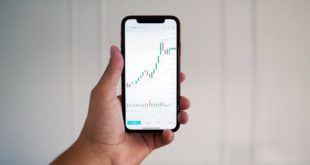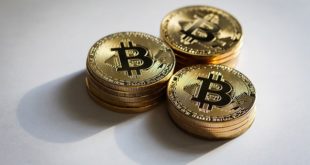We live in interesting times. In ancient China, this statement was called a curse – and what can we say about today as witnesses to the history around us?
Currently, the whole world is surrounded by a network to which the spider web thread has seemingly unlimited access – each of us. However, we created the virtual world, which was supposed to be a place of freedom and free from pressure and control of the outside world – i.e. political decision-makers – but unfortunately it’s a subject to control and pressure.
Beginnings
Once upon a time, long time ago, in the exchange of goods it was enough to exchange one good for another, and the only value was demand. Humanity, while developing, was forming ever larger social groups, which in their diversity – naturally – created the necessity to create a substitute for these goods. This is how money came into being – something that was conventionally exchangeable for this demand. And this money was covered in value depending on the amount of goods available on the market. However, in order to get to the market, they need work and therefore time. At this point, the era of work began.
But where there is money, there is power. Means of payment, created and controlled by a limited and privileged social group (decision-makers). It is supposed to represent and protect the interests of society as a whole – only that they do not and have never done so. The second group that has had, and nowadays has a huge influence on the control over money is the environment of banking corporations.
A huge breakthrough in the history of money was the invention of a cheque – the first form of physical substitution of a given value for another equivalent in principle. The security was subject to a tariff – a fee for the service of confirming the authenticity of the exchange transaction.
The history of money is going on
Centuries are passing – the time of steam and electricity is coming – the telegraph, radio, telephone, television are changing the image of the world. The world is getting smaller and the flow of information is getting bigger and faster. Computers and the ubiquitous network penetrate into our lives and become everyday life. The demand for computing power is growing. There is also a growing demand for the security of electronically stored and exchanged information.
1918, the end of World War I – huge inflation in Germany. 1929 (black Thursday), the crash on the New York Stock Exchange – these were the beginnings of the end of the loss of trust in the money issued by the State or, in principle, Governments. Money, since the end of the Second World War more and more often ceased to be covered with bullion. Nowadays, it is controlled by Central Banks – and banking corporations, which are the only ones that have exclusive rights to create and set value.
The end of the 20th century – the concept of an asymmetric cipher, a mathematical one-way function designed to secure and authenticate the transmitted information. This solution was initially used only by governments, the army and banks. This guaranteed confidentiality and certainty as to the integrity of the data as well as that of the sender itself.
However, it turns out that not everything is lost because the evolution of information technology – the development of the network, the Internet – has brought new concepts for the security of information flow in the form of Blockchain, as a decentralised and independent authentication system, which has resulted in liberation from the hands of decision-makers. And this is where our history begins. We live in interesting times – may that not be a curse.
For several years we have been witnessing a financial revolution. In the next dozen or so financial institutions will be forced to make huge transformations, or they will cease to exist.
For some time now, governments of many countries, with the participation of central banks, have been preparing for the liquidation of money in the form as we know it. In order to maintain control over citizens’ savings, decision-makers want to introduce non-cash operations. Not so long ago, in 2015, Greece introduced limits on ATM withdrawals, which led to a 135 percent increase in non-cash card transactions. In Portugal, any operation above 1,500 euros must be carried out by bank transfer or card, Austria has withdrawn its deposit guarantee.. The aim is to control the movement of capital – the control of citizens. For over a year now, regulations on e-declarations have been in place in our country. Every commercial operation is registered and taxed several times – from taxes on labour to taxes on services and trade and savings. In our case, more than 80% of our earned money goes to the state treasury, although some people raise this estimation to as much as 90%. Therefore, the emergence of blockchain technology is a threat to the current order.
Many countries have been considering the use of this technology for some time now, implementing its solutions for their own purposes. Belarus – invites you to invest in cryptocurrencies in their country, Russia – is considering introducing its own cryptocurrency, Japan or Australia have legalised trade with the help of cryptocurrencies – considering it to be a fully-fledged means of payment. Great Britain – is considering introducing its own solutions, based on blockchain technology, although it has not yet defined specifics. Large international institutions, banks have implemented their own solution of fast FIAT transactions, based on the Ripple environment. Even India wants to base the flow of all intra-state operations on blockchain technology. In our country, politicians still have problems with defining what cryptocurrency or virtual money is.
Currently, the global financial system is a very inflationary system.
The value of money is determined by the issuers – there is no support in reality and it does not belong to the citizens. Remember that your money is not yours – it can lose value at any time or can be frozen or confiscated. The best example can be an attempt to withdraw 100 dollars in the United States, the face value of 50 pounds in England, 1000 Swiss francs or the so called jump on open pension funds in Poland – which clearly proves that money does not belong to us any more, after the statement of the former Prime Minister D. Tusk. This can be confirmed by the example of Cyprus, where a few years ago bank accounts worth more than EUR 100,000 were confiscated – money that was invested by the entrepreneurs from all over the world.
How many of us have been wondering or wondering how much money actually exists physically in the world’s circulation? Of course, we are talking here about money officially recognised by Governments and issued by Central Banks.
It turns out that there is about 8% of them physically – the rest is only a book entry in bank accounts. Interestingly, the world’s public debt exceeds forty times the value of physical money and, according to estimates, even if all the countries of the world decided to repay it, the debt would still be in the order of $100 trillion. This is because fiduciary money is a currency that is based on the monopoly of the institutions that control it. Institutions having power over the creation of money, guard it jealously. On the other hand, knowing that they are insolvent, they limit the physical money available to citizens. In order to limit the physical flow of cash, payment cards and the ability to process orders via Internet platforms were introduced. Of course, these are the most positive forms for the holder of a bank account in terms of access to the accumulated funds and the speed of the operations. But this does not change the fact that if all people wanted to withdraw their savings from the banks – the banks would go bankrupt. This is something that decision-makers cannot afford. Control over money is control over citizens’ lives.
2009 marked the beginning of a new era, revolutionising the virtual world and influencing the real world. The concept of a cryptocurrency presented by the programmer Wei Daia in 1998 is realized in the form of Bitcoin – the first virtual money based on blockchain technology.
Huge stock exchanges are created where we can operate with virtual money and exchange it for fiduciary money at any time. Currently, there are 1394 registered cryptocurrencies (the so-called coins) and an unspecified number of their derivatives (the so-called tokens). The value of all coins in the market is estimated at about 750 billion dollars and is still growing. Therefore, this money is lost to banks and their turnover is reduced by the value of virtual substitutes for money.
This is unwanted competition for banking institutions, mainly because they cannot earn money from intermediary transactions. Central Banks cannot pass the fact that they cannot control the cryptocurrencies by issuing them. Only a State which determines by law the exchange of the cryptocurrency into the currency of the country may benefit from this exchange in the form of tax – provided that the currency conversion takes place.
At the same time, people on a global scale withdraw their money from bank deposits on which, through uncontrolled inflation, they cannot earn money. In Poland alone last year, individuals and companies withdrew over PLN 30 billion from bank deposits.
The revolution cannot be stopped. As I wrote earlier, we are witnessing a financial revolution and financial institutions, whether they want it or not – they have to adapt to new conditions and new trends – or they will cease to exist.
Currently, banking institutions have moved to a counter-attack, through the blocking of bank accounts to organisations trading in cryptocurrencies. Officially, this is, of course, due to the good of the customer and taking care of his money. Translations of decision-makers are trivial – if you invest in a cryptocurrency, there is a risk that you will either lose it, use it for criminal purposes or try blockchain betting with it. I wonder why they don’t say the same thing about traditional stock exchanges?
Reality, reality – and what can the future look like?
Imagine a world managed by a decentralised AI – responsible only for authentication of a broadly understood transaction. A world without the money we know. A world in which the only value is the value of man, who creates and represents this value. Man, on the other hand, through the work he does, increases his value in relation to others. This value is represented and convertible into available goods through an individual token assigned to it and issued shortly after birth. A token that cannot be counterfeited and is controlled by society as a whole, through insights into each blockchain’s transaction history – a token of vapors based on trust and not just fides (i.e. faith).
And it is precisely the vision of such a world that can be realized with the help of revolutionary technology – which is blockchain and the 21st century belongs to the cryptocurrencies!.
 Gearfuse Technology, Science, Culture & More
Gearfuse Technology, Science, Culture & More



